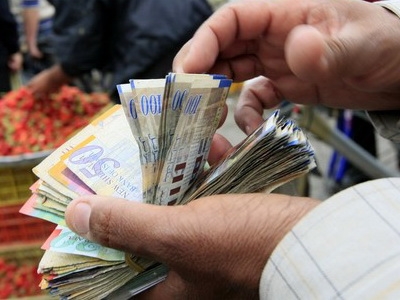International Reports about Gaza
The shortage of Israeli Shekels in Gaza Strip

The crisis that resulted from the shortage of Israeli Shekels in Gaza Strip started on 19th of September 2007 when the Israeli government declared Gaza Strip as “hostile entity”. Few days later, the Israeli banks declared that they will stop dealing directly with Gaza-based banks and that they will only deal with Banks’ HQ in Ramallah, West Bank. Accordingly, Ramallah-based banks became responsible to transfer the currency to their branches in Gaza Strip. Nevertheless, and according to Israeli regulations, carrying or transferring huge amounts of currency being the Israeli shekels, US dollars or any other currency require the pre-approval of the Israeli Ministry of Defense and other Israeli security forces to move the currency form Ramallah to Erez checkpoint at the entrance of the Gaza Strip. Since then, the banking sector in the Gaza Strip faced serious problems in finding enough cash to fulfill its obligations towards their customers. The shortage of the Israeli Shekels in the Gaza Strip banks and with money exchangers becomes very serious at the end of every month when paying the salaries of the two governments (Ramallah caretaker Government headed by Mr. Salam Fayyad, and Gaza Government headed by Mr. Ismail Haniyeh) is due. According to different sources, the banks in Gaza Strip need 300-400 million shekels every month to pay the salaries of the employees of Ramallah government and those of the Hamas government, in addition to payments for pension to the retired and the social allowances to the poor families who are paid through the EU Peagas mechanism. Causes of the crisis: The shortage of Israeli currency in the Gaza Strip is due to many reasons 1. Israel stopped transferring enough cash to Gaza since September 2007. By average only -0 of the Gaza Strip needs was met by Israel throughout the past period. 2. The deterioration of the value of the US dollar against other currencies has pushed the Palestinians to shift to the Israeli Shekels in their daily deals as it became more stable than the US Dollars. Furthermore, the ordinary people have shifted their savings into Shekels instead of Dollar. These savings are kept at homes rather than re-injecting them into the banking circle. 3. Due to the restriction on movement of the Gaza’s businessmen to Israel and due to the lack of commercial trust between the Palestinian and Israeli counterparts, Gaza’s businessmen are obliged either to pay in cash and immediately at the military crossings or to carry huge amounts of Israeli Shekels through Erez crossing and through those who are permitted to cross into Israel. 4. Since June of 2007 when Israel imposed closure on the Gaza Strip, the export of Gaza products was entirely stopped which stopped the flow in of Israeli shekels into Gaza. Accordingly, the salary transfer from Ramallah to Gaza every month has become the only source of NIS flow in to the Strip. 5. Until few weeks ago, Israel rejected to change some NIS 70 million of the depreciated Shekels which Gaza Strip banks owned. On the other hand, Gaza banks cannot use this money to pay the salaries of the employees as they were in very bad shape. Only recently the Israeli government accepted to change some of this amount. Coping mechanism and some remarks This currency crisis has impacted negatively on people and the banks and the local economy in general. Banks were unable to fulfill its obligations towards their customers, since the crisis started. On several occasions, people who were lining up in front of the banks to take their salaries lost their temper and clashes erupted between the customers and the banks’ employees. Some serious incidents occurred when banks employees were attacked, injured or insulted by the angry clients. Gaza Strip banks found themselves in the middle of the battle. On the one hand they do not receive enough Israelis cash; on the other hand they cannot explain the crisis to angry clients, who most of them are ordinary employees, poor families, retired people and the beneficiaries of the welfare system who wait un-patiently to take their allowances and salaries. This has pushed banks to take mitigation measures such as: • Some banks preferred to close their doors for few hours, call for local police, and delay the payments of salaries for few hours or for 1-2 days until they collect enough cash to pay the salaries. • Other banks obliged their customers to take their salaries on many installments. Some banks obliged their customers to take part of their salaries in US$ and the rest in shekels which caused losses to people as the banks fixed their exchange rate higher than the market rate. People had no choice on this deal. This week the EU subsidized social allowances to hardship cases with NIS 1,000. These allowances were paid as follows: US$200 on the rate 3.5 NIS and NIS 300 which have caused losses to the beneficiaries by NIS 15-20 because of the market exchange rate was 3.3. According to many bankers in Gaza, Hamas has no reason to keep the shekels. They think that the crisis is expected to happen in such circumstances “less shekels flow in to Gaza while more Shekels flow out from Gaza” .One of the main banks which is operating in Gaza Strip has up till now NIS58 Millions within all its branches throughout the Gaza Strip while they need NIS 120 million to pay the salaries which started Thursday 25th of September and will continue in the coming Sunday. Banks in Gaza will face serious problems if they do not receive more the Israelis currency.
